By Rank Jacker on February 5, 2023
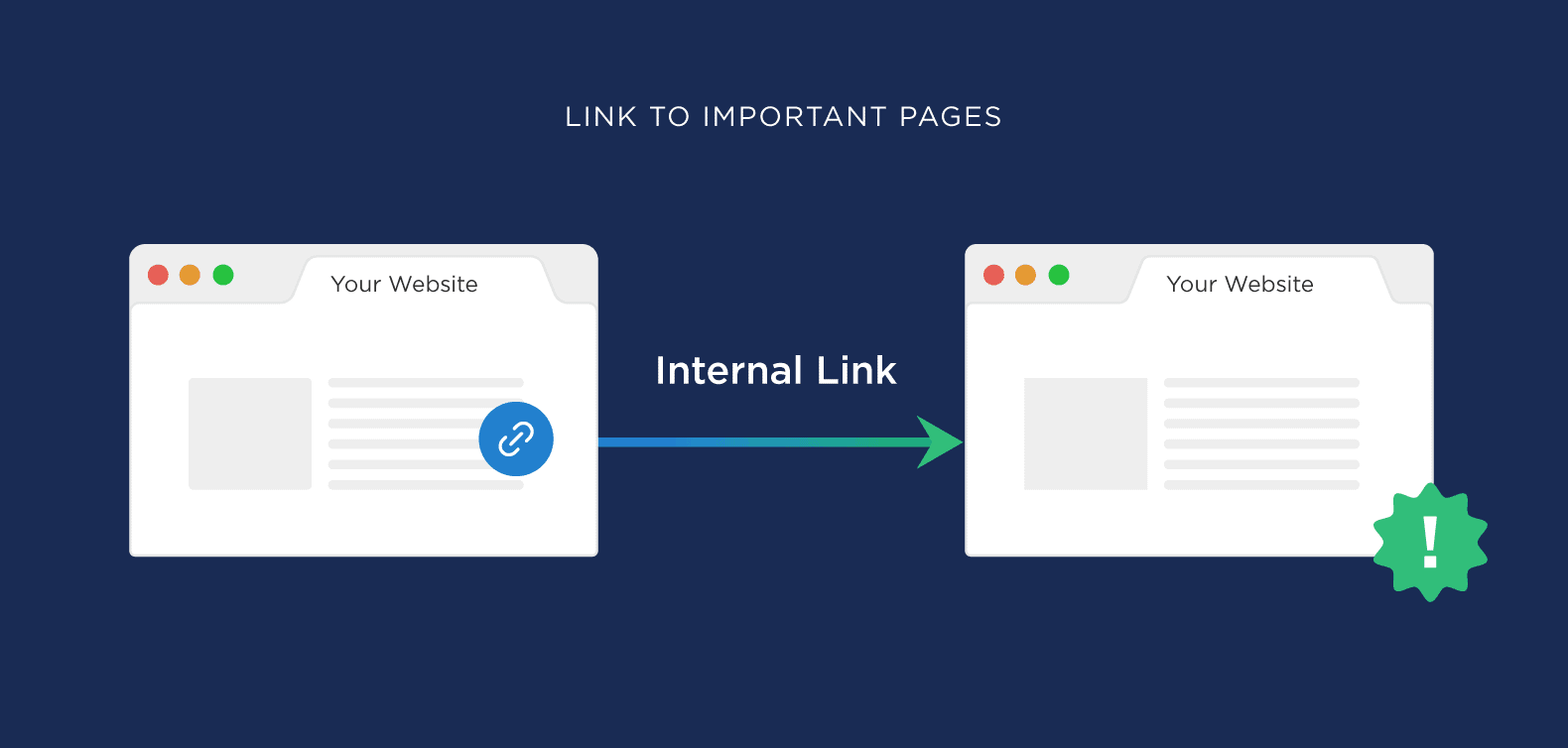
Building internal links is the foundation of every SEO campaign! But does that mean you can build any link, whether it is relevant or not? The answer is no! Building the right links is essential to skyrocket your site’s rankings.
If you are skeptical about how to proceed with building internal links aptly, this guide has everything you must know. From tested strategies to easy-apply practices, I’ve seasoned this article with all the information and experience I’ve gathered by serving some big-shot companies for over a decade.
Link building is one of the most important aspects of SEO, but external links take all the limelight over internal links when it comes to SEO. Some technical SEO facts that may assist you for good. Although internal linking is ignored often, let me show you how important it is to focus on internal linking as well to define a website’s SEO well-being.
Top Three Purposes of Internal Links:
It is important to simplify- how Google finds and values your content through internal linking.
The basic internal linking structure reinforces your SEO further and the value of the entire site. Even your content should offer quality too, some tips are here for you.
Meeting up with the user’s expectations and requirements, it also provides a clear route for search bots across a tight-knit network of posts and pages, and most importantly helps users to stay on your site for longer sessions which ultimately adds to a positive user experience.
But how to achieve it? Here are our SIX-worthy commandments!
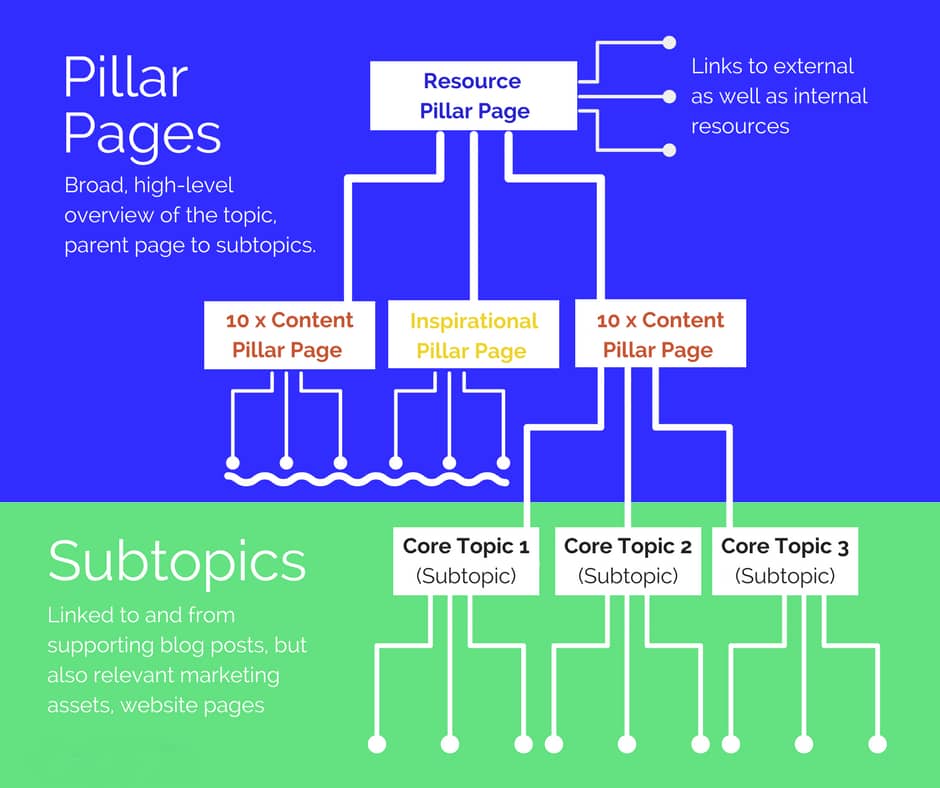
To make the architecture of your site straightforward. Hub pages are often targeted as specific broad keywords that have high search volumes, rather than narrowing down the scope and long-tailed keywords that offer few monthly searches.
The end goal is to drive people to “CALL TO ACTION”, generating high revenue with innumerable traffic. To do the internal linking in the right way, a business needs to target its main keyword and compile the top-rank pages by using a keyword research strategy.
Pro Tip: Try not to create many hub pages, as you will end up being in the niche. Instead, take one Hub Page and articulate topics around that content. Further, it will help you to support and connect the content internally.
WHAT Can Be Called A HUB?
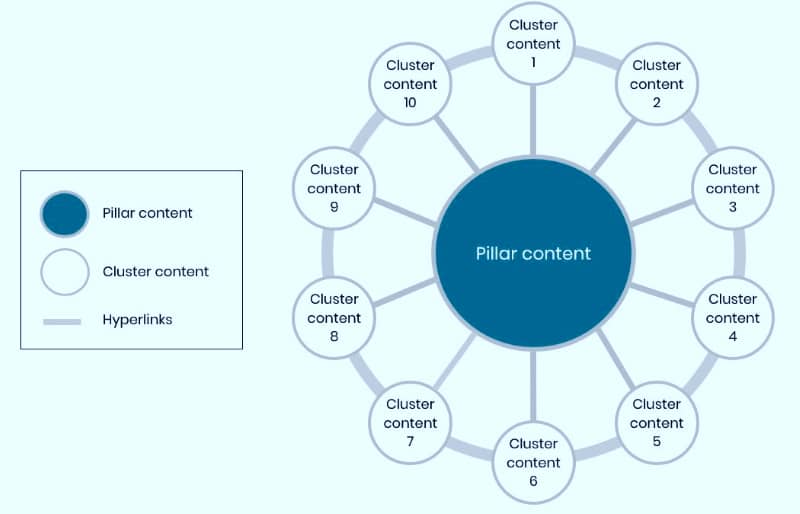
It works in a simple way:
With more high-quality content, and more options to link, the quality of the internal linking strategy will rise.
As you have identified the hub pages, the topic cluster process starts with the making of the silo, usually the primary page of a specific topic. All the other content will add up either to be a supporting arm or add depth to the concept. More internal links to a main or homepage will determine its authority and represent it as an authoritative source.
The simplest and quickest way to organize all the content is to make it a part of an excel spreadsheet. I have attached an image only for your reference:
| Top Hub Pages | Supporting Page Level 1 | Supporting Page Level 2 |
|---|---|---|
| Car Finance | Bad Credit Car Finance | IVA Car Finance |
| CCJ Car Finance | ||
| Used Cars | Used Ford Cars | Used Ford Focus |
| Used Ford Fiesta | ||
| Used Volkswagen Cars | Used Volkswagen Polo | |
| Used Volkswagen Golf |
Now, the next and foremost step is to find the most appropriate anchor text for your content. It is advised to spend a little extra time on step 3, as an effective anchor text is a way to indicate topic relevance and helps to build a connection between two pages.
Here Are a Few Things That You Should NEVER Forget:
Try to diversify your anchor text, every time to go through internal link building, if possible. But make sure the whole crux stays the same and it should look similar to the previous one, not detracting your efforts in the hope to optimize certain keywords.
Focus on using long-tail keywords to boost your rankings and allow your content to target a specific audience.
Try not to fit an exact anchor text wording into your content. Instead, look out for more natural and authentic opportunities without losing relevance.
“DO I NEED TO INCLUDE MY MAIN KEYWORD IN THE ANCHOR TEXT ALL THE TIME?”
If you do have the same question in your mind, then the answer to the above question is quite ambiguous. In general, you are never penalized for using the same anchor texts for creating internal link-building. But for external link building, the whole process is different.
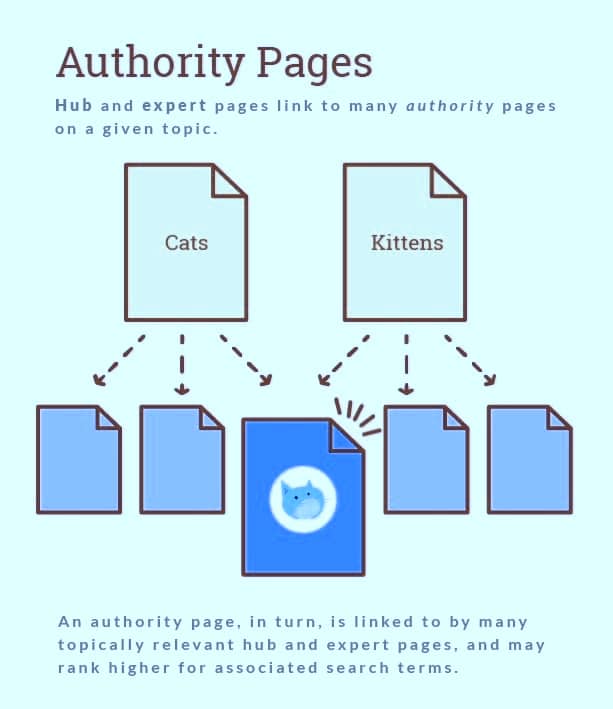
Imagine the pyramid of your site (Shown below) and stick to your level of hierarchy to put the efforts to lift the lowest content above.
Connected to step 4, step 5 is all about getting high-quality links. You need to go through pages having the most powerful and valuable links. Look at this as an opportunity to link your other valuable resources to them to give a boost to your page rankings.
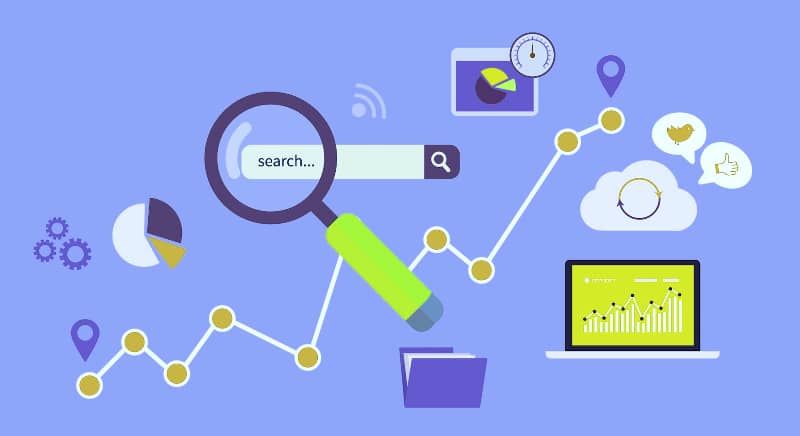
If your website has not been able to get innumerable links, start the approach with a view to optimizing the newly updated, recent, and fresh content first. Try to add contextual links to your new content with the help of existing ones.
One way to go with it is to randomly search your query using original keywords and look out for the related results that can be used to internally link the content. The results shown by google are listed and can help to boost your page ranking in no spam of time.
For instance, if you want to look for articles related to internal linking posted by Rank Jacker.
Try using it in this way:
Rankjacker.com: internal link
Syntax: Sitename: topic name or keyword
Frequently Asked Questions
Q1. Define Internal Link Building.
Internal Links- These are hyperlinks that direct you to the point at (target) the identical domain as that existed on the (source) link. In simpler or layman’s terms, an internal link directs you to another page or post that exists on the same website.
Q2. Explaining Internal Linking With An Example?
An internal link simply texts hyperlinks guiding a user to move from one page to another page on a particular website. This website navigation from page one to page two within the website via the help of links provided in the content is an example of internal linking.
Q3. Is Internal Linking Bad For SEO?
An internal link is a powerful SEO tool used by both digital marketers and Search engines to find relevant content on your website related to the topic a particular user is browsing. It enhances the user stay time and the engagement matrix of the site. More the relevant contextual links provided on a page, the better is for both users and Search Engines. It further helps in boosting the page ranking. Hence, crucial to your SEO.
Q4. Are Internal Links And Backlinks The Same?
The simple answer to the above question is “NO”. An external link and backlines are the same as they direct an individual from one website to another website. Whereas, internal links are the links that guide an individual from one page to another page of the same website
Final Thoughts:
Like external linking, internal link building is also crucial because search engines only consider you an authority when you cover everything around a topic (which you can do by making topical clusters).
At Rank-Jacker, we assist website owners by tailoring internal linking strategies based on their site and industry. We help you leverage the content you have already published by properly linking everything internally.
Book a free consultation today to understand how an excellent internal link-building strategy can make your site climb the SERPs.
Additional Articles
Busting the Myths: 11 Common Misconceptions About Niche Edits
What if I say niche edits can help you achieve desired rankings and targeted organic traffic? So...
02.26.24
Niche Edits Vs. Guest Post: What’s Better for Building Backlinks in 2024?
It’s not news that after expertly written content, you need high-quality backlinks to uplift your...
02.16.24
Determine The Quality Of Niche Edit Backlinks: The Only Checklist You Need
As Google’s algorithms continue to refine their criteria for ranking websites, the pursuit ...
02.13.24
IF NOT NOW, THEN WHEN?
BOOK A CALL TODAY